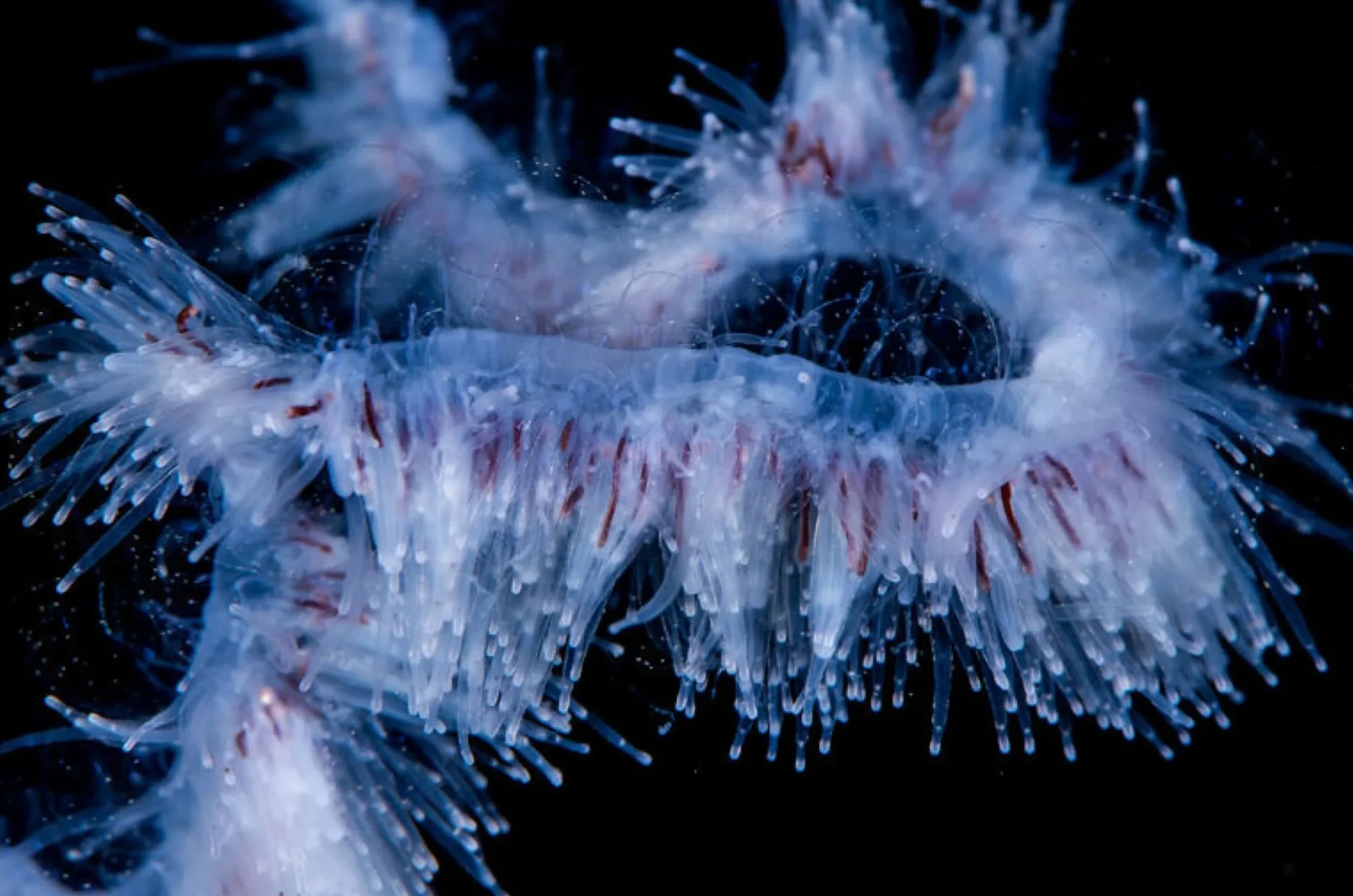Open-pen fish farms facilitate and exacerbate harmful jellyfish blooms
Jellyfish blooms can present a severe threat to the current and future industries of the Falkland Islands, as well as to the marine environment, for these reasons:
Jellyfish blooms impact native species by consuming their eggs and larvae, which threatens the species commercially fished in the Falklands
Jellyfish blooms compete with native species in consuming plankton, which underpins the food web
Jellyfish blooms create a variety of serious negative health impacts on native fish and bivalves
Jellyfish blooms negatively impact native invertebrate species by outcompeting these for settling space
Jellyfish blooms risk destabilising the ecosystem, from which recovery is unlikely
-
Excerpts from Positive Feedback Loop Between Jellyfish & Salmon Farming by Dr Lisa-ann Gershwin:
“Salmon farming is exacerbating jellyfish blooms, which are in turn impacting ecosystem stability and industry viability.” “Jellyfish blooms harm not only salmon, but they also permanently degrade the environment and affect the native species that live there.” “Experiments on jellyfish polyps have demonstrated that they prefer artificial surfaces (Bloecher et al. 2013; Holst and Jarms 2007). The infrastructure associated with salmon farms, therefore, offers an ideal habitat for jellyfish to flourish in.”
“Jellyfish blooms also impact native invertebrate species like bryozoans and sponges through polyps outcompeting these other species for settling space.” “One of the biggest impacts, however, that jellyfish blooms have on native species is by consuming their eggs and larvae, as well as the plankton that the larvae would eat. This double whammy of predation and competition can keep other species from replenishing by continuing to consume any eggs and larvae they produce. In this way, jellyfish effectively ‘flip the ecosystem’ to being dominated by themselves, and once flipped, these ecosystems are highly resilient against switching back to what we would consider healthy.”
“There is no question that salmon farming is affecting native species; the unresearched questions are how badly and how permanently.” “Fish farms attract and incubate opportunistic pests because of their artificial nature; this presents a chronic biosecurity risk to the fish. Likewise, from the point of view of native species, salmon farming presents a biosecurity risk, because farms breed pathogens and degrade water quality.”
“So the more nutrients, the more phytoplankton, the more zooplankton, the more jellyfish. And unfortunately, not many things eat jellyfish, so they typically bloom into super-abundances then die off, and when they do, they add to the nutrient load, which keeps the cycle going. Therefore, there is a positive feedback loop between jellyfish and nutrients, which is aided by salmon farming. Jellyfish swarms, therefore, are not only a visible indicator of imbalance, they are also a driver to speed the ecosystem to a much worse state.”
String jellyfish are “wreaking havoc” in Scotland and Norway
Examples of jellyfish blooms devastating fish and ecosystems
-
● “The string jellyfish […] is a colony jellyfish with strong venom.”
“In recent years, there has been an increase in occurrence along the Norwegian coast.”
“The fish that came into contact with the string jelly fish suffered burns on the skin with an increased risk of infection. Eye damage also occurred in the fish, something that can destroy vision.”
“If the jellyfish causes stress and panic in the population, the fish can suffer further physical damage if it swims in the net wall or the fish collide with each other.”
● “Increasing sightings of the string jellyfish – at the same rate as before the ‘horror winter’ last year.”
“Last winter, the jellyfish killed around three million farmed fish.”
-
“String jellyfish species that has killed millions of salmon in Norwegian sea farms reported in Scotland”
“A jellyfish species that has been wreaking havoc on Norway’s salmon industry has made its way to Scotland, causing significant damage and prompting calls for urgent action.” Reference
-
“A mass of thousands of jellyfish at Hobart's waterfront dock may look like a natural phenomenon, but a leading scientist has warned its presence indicates something awry in the marine habitat.”
“The salps were feeding on phytoplankton in the water, which are at a "tipping point" of abundance at the moment due to excess nutrients from aquaculture and agricultural runoff.” Reference
-
A jellyfish bloom caused a farmed salmon mass mortality event in Reyðarfjörður, Iceland. Reference


